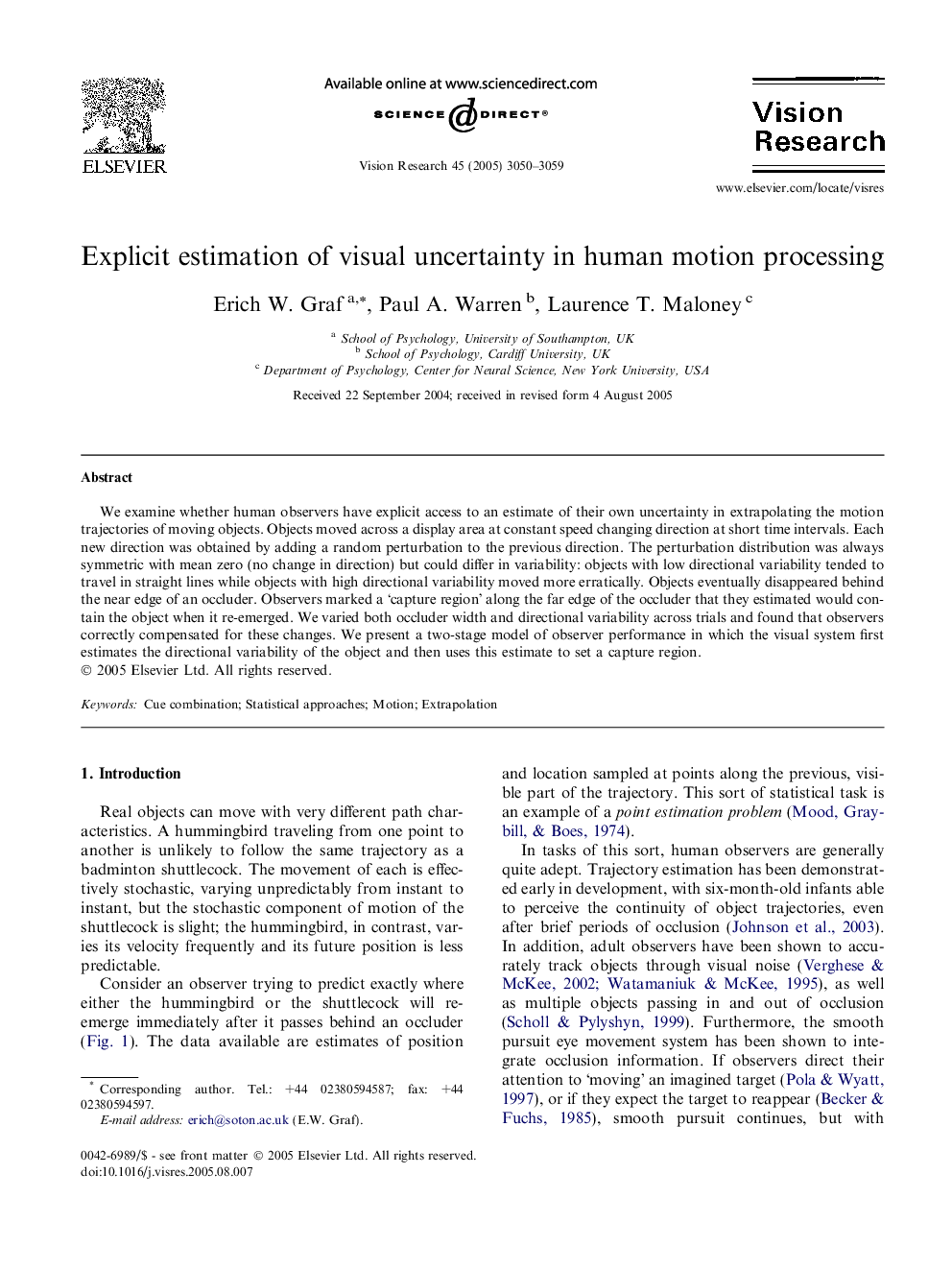| Article ID | Journal | Published Year | Pages | File Type |
|---|---|---|---|---|
| 4036032 | Vision Research | 2005 | 10 Pages |
We examine whether human observers have explicit access to an estimate of their own uncertainty in extrapolating the motion trajectories of moving objects. Objects moved across a display area at constant speed changing direction at short time intervals. Each new direction was obtained by adding a random perturbation to the previous direction. The perturbation distribution was always symmetric with mean zero (no change in direction) but could differ in variability: objects with low directional variability tended to travel in straight lines while objects with high directional variability moved more erratically. Objects eventually disappeared behind the near edge of an occluder. Observers marked a ‘capture region’ along the far edge of the occluder that they estimated would contain the object when it re-emerged. We varied both occluder width and directional variability across trials and found that observers correctly compensated for these changes. We present a two-stage model of observer performance in which the visual system first estimates the directional variability of the object and then uses this estimate to set a capture region.
